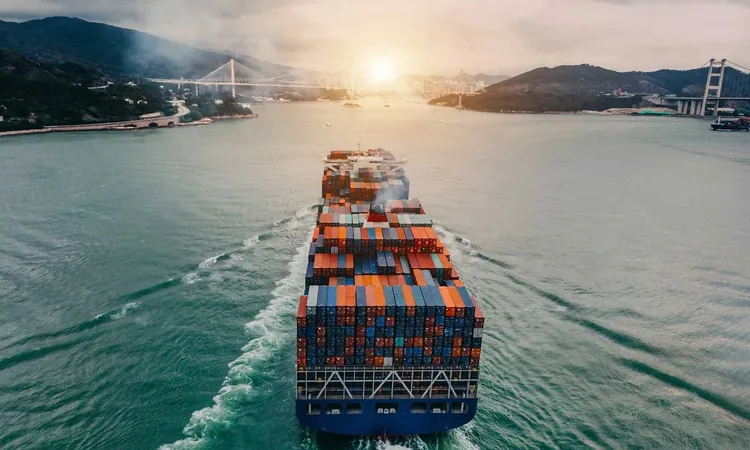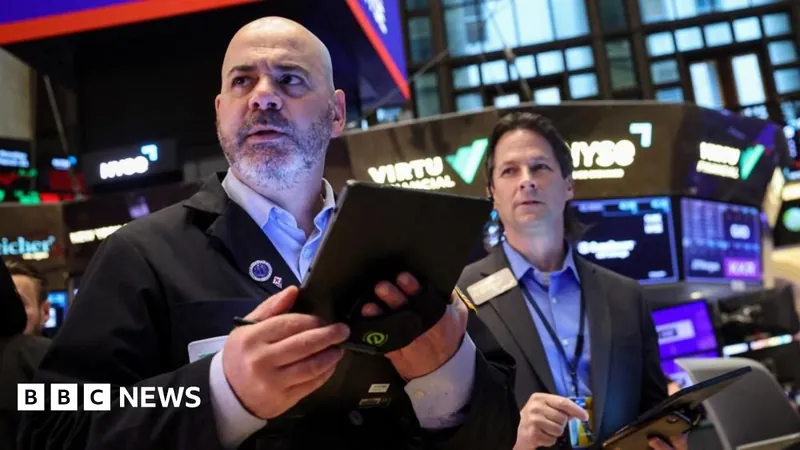
Navigating Troubling Waters: Trump’s Tariffs and Their Impact on Hong Kong’s Art Scene
2025-03-26
Author: Ming
In a world where global markets are increasingly interconnected, Hong Kong has long stood as a beacon of free trade. Its status as a free port, characterized by an absence of import duties and sophisticated logistics, has nurtured a vibrant art market. However, with mounting tariff threats, this once unassailable bastion of trade is facing uncertain times.
Currently, Hong Kong's art trade seems more immune to U.S. tariffs than its mainland counterpart, as galleries prepare for the upcoming Art Basel Hong Kong. Amanda Hon, managing director of Ben Brown Fine Arts and co-president of the Hong Kong Art Gallery Association (HKAGA), shares, “We all seem to be going steadily.” Yet, the rising costs of shipping have forced galleries to devise innovative approaches. Strategies include consolidating shipments with other galleries and extending exhibition durations to cope with logistical hurdles.
Henrietta Tsui-Leung, founder of Ora-Ora gallery and fellow HKAGA co-founder, notes that while the financial ramifications of the trade war may ripple through the stock market, foreign collectors from the U.S. continue to purchase artworks in Hong Kong. She highlights the efficiency of routing sales through alternative ports outside of America: "There are many ports to send works to that are not necessarily in America."
Understanding the specifics of Trump’s current tariffs is essential. Tariffs previously established during Trump’s presidency and later expanded under President Biden focused on the origin of artworks, causing different repercussions for the U.S. and China. For Hong Kong artists, the situation remains relatively stable. Pascal de Sarthe, who runs a gallery in Wong Chuk Hang and recently opened an American branch, reported no tariffs for sending works to recent art fairs.
In contrast, mainland China grapples with more stringent tariff regulations. The newly enacted tariffs fall under the International Emergency Economic Powers Act (IEEPA) and include a 20% duty on certain materials, with exemptions for "informational materials" like paintings and prints. Notably, recent Section 232 tariffs have increased duties on steel and aluminum, impacting metal sculptures. The deterioration of trade relations has introduced a complex tariff landscape, necessitating awareness among galleries and collectors.
Henry Darst from Imperative Logistics emphasizes the volatility of the tariff situation, stating, “the situation surrounding the tariffs is fluid and can change with short notice.” Antiques still face hefty duties, with a combined rate of 27.5% for imports from China, which could deter collectors and galleries looking to procure Chinese antiquities.
The uncertainties surrounding tariffs also play a role in global shipping economics. With a looming $1.5 million fee on Chinese vessels entering U.S. ports, we are observing fewer shipments overall—though it remains difficult to pin down the exact correlation to the tariffs. "Our commercial clients are now more conscious of costs," adds Darst.
While the immediate effects of the U.S.-China trade war appear circumvented in Hong Kong, its art market, still recovering from the pandemic, faces other challenges. Hon conveys a sense of cautious optimism among dealers as they look beyond Hong Kong to Southeast Asian markets to diversify their reach.
As Henrietta Tsui-Leung optimistically notes, the atmosphere this year feels markedly different from previous years, suggesting that upcoming events like Hong Kong Art Week in 2025 might showcase renewed vigor, bolstered by initiatives that connect local galleries with Western counterparts.
Yet, with tensions persisting on the global trade front, Pascal de Sarthe cautions, “Conflict affects everyone, one way or another.” He hopes Hong Kong can maintain its free-trade ethos, a cornerstone of its cultural and commercial vibrancy, while balancing its influential position amid a rapidly evolving trade environment.
As the art community watches closely, the future of Hong Kong’s art trade appears poised at a critical juncture—one that could redefine its role in the global art market for years to come.


 Brasil (PT)
Brasil (PT)
 Canada (EN)
Canada (EN)
 Chile (ES)
Chile (ES)
 Česko (CS)
Česko (CS)
 대한민국 (KO)
대한민국 (KO)
 España (ES)
España (ES)
 France (FR)
France (FR)
 Hong Kong (EN)
Hong Kong (EN)
 Italia (IT)
Italia (IT)
 日本 (JA)
日本 (JA)
 Magyarország (HU)
Magyarország (HU)
 Norge (NO)
Norge (NO)
 Polska (PL)
Polska (PL)
 Schweiz (DE)
Schweiz (DE)
 Singapore (EN)
Singapore (EN)
 Sverige (SV)
Sverige (SV)
 Suomi (FI)
Suomi (FI)
 Türkiye (TR)
Türkiye (TR)
 الإمارات العربية المتحدة (AR)
الإمارات العربية المتحدة (AR)